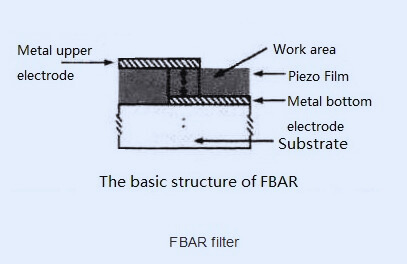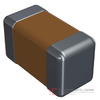- English
-
EnglishDeutschItaliaFrançais한국의русскийSvenskaNederlandespañolPortuguêspolskiSuomiGaeilgeSlovenskáSlovenijaČeštinaMelayuMagyarországHrvatskaDanskromânescIndonesiaΕλλάδαБългарски езикGalegolietuviųMaoriRepublika e ShqipërisëالعربيةአማርኛAzərbaycanEesti VabariikEuskeraБеларусьLëtzebuergeschAyitiAfrikaansBosnaíslenskaCambodiaမြန်မာМонголулсМакедонскиmalaɡasʲພາສາລາວKurdîსაქართველოIsiXhosaفارسیisiZuluPilipinoසිංහලTürk diliTiếng ViệtहिंदीТоҷикӣاردوภาษาไทยO'zbekKongeriketবাংলা ভাষারChicheŵaSamoa日本語SesothoCрпскиKiswahiliУкраїнаनेपालीעִבְרִיתپښتوКыргыз тилиҚазақшаCatalàCorsaLatviešuHausaગુજરાતીಕನ್ನಡkannaḍaमराठी
Guide to Bulk Acoustic Wave Filters
Catalog

Overview of Bulk Acoustic Wave Filters (BAW)
Bulk Acoustic Wave (BAW) filters serve a major roles in RF and microwave communications, translating electrical signals by utilizing the piezoelectric traits of materials like quartz. Interdigital transducers (IDTs) reside at the center of this process, incorporating metallic electrodes woven into specific patterns on substrate materials. This meticulous arrangement oversees the conversion between electrical signals and acoustic waves, facilitating precise signal filtering.
Understanding Filters in RF Systems
Power filters are essential components in the field of electronics, specifically designed to manage the quality of power signals. Comprising capacitors, inductors, and resistors, these filters effectively isolate or eliminate unwanted frequencies from a power line. This selective isolation allows the filters to either deliver a power signal of a specific frequency or remove particular unwanted frequencies, thereby enhancing the cleanliness and usability of the electrical power supplied.
In electronics, a "wave" refers to the periodic fluctuations in various physical quantities, such as voltage or current, which can be captured and represented as signals through the use of sensors. Filters play a critical role in processing these signals by allowing only desired frequencies to pass through while blocking others. This is essential for reducing electrical noise and preventing interference, ensuring that the signals remain pure and are of high fidelity. Filters are thus pivotal in maintaining the integrity and efficiency of electronic systems, particularly in environments where signal clarity is paramount.
Differences of SAW, BAW, and FBAR Filters
SAW (Surface Acoustic Wave), BAW (Bulk Acoustic Wave), and FBAR (Film Bulk Acoustic Resonator) filters are required technologies for signal filtering in wireless communication. Each offers unique strengths: SAW filters excel in low-frequency applications, BAW filters handle high frequencies with superior temperature stability, and FBAR filters, as a subset of BAW, are optimized for compact designs and high-performance needs. Understanding their distinctions help you in choosing the right solution for specific RF challenges.
SAW Filters
Surface Acoustic Wave (SAW) filters leverage the piezoelectric properties of materials like quartz and lithium niobate to propagate acoustic waves along a substrate's surface.

This technology, initially designed with military precision, has gracefully found its way into consumer favorites like televisions and smartphones. Their presence in our daily digital companions symbolizes not just their functionality, but also a seamless integration into users' lifestyle needs. They are well-suited for applications within 2 GHz, such as TVs, mobile phones, GPS, and satellite communications. However, their limitations include temperature sensitivity and reduced effectiveness above 2.5 GHz due to design constraints like electrode spacing.
BAW Filters
BAW filters excel in high-frequency scenarios above 2.5 GHz, offering advantages such as lower insertion loss, higher out-of-band attenuation, and temperature insensitivity.

Unlike SAW filters, BAW propagates waves vertically within the substrate, forming standing waves that enable precise filtering. This capability makes them indispensable for high-frequency applications, including advanced 4G and 5G systems.
FBAR Filters
Film Bulk Acoustic Resonator (FBAR) filters, a subset of BAW technology, utilize MEMS and thin-film techniques to achieve higher performance. FBAR filters cater to multifunctional wireless devices integrating GSM, CDMA, WCDMA, GPS, Bluetooth, and Wi-Fi functionalities. They are increasingly important in next-generation wireless communication, where compactness and power efficiency are necessary.

The Potential of BAW Filters to Lead in the 5G Era
As 5G technology continues to reshape wireless communication, the demand for high-performance filters is at an all-time high. Bulk Acoustic Wave (BAW) filters, with their ability to handle high frequencies, low insertion loss, and excellent out-of-band attenuation, are emerging as key players in addressing the challenges of modern RF front-end design. These advanced filters are poised to revolutionize the 5G landscape, offering unparalleled support for multi-band, high-speed, and high-frequency applications.
Advanced Frequency Management in New-Age Mobile Technologies
As mobile technologies rapidly evolve, they impose substantial demands on frequency management. With the growing complexity of carrier aggregation and the challenges of mitigating interference, there is an intensified focus on sophisticated RF filtering solutions. Bulk Acoustic Wave (BAW) filters, known for their exceptional capacity in handling wide frequency ranges, emerge as a preferred technology to tackle these intricate challenges.
Comparing BAW and SAW Filters
Traditionally, Surface Acoustic Wave (SAW) filters have been effective for managing frequencies below 2.5GHz. However, as technological requirements extend beyond this range, BAW filters offer a capable alternative. Efficiently operating at frequencies up to 20GHz, BAW filters present a strong answer to the high-frequency limitations that SAW filters encounter. RF design experiences often highlight the superior performance of BAW filters in high-frequency applications, reinforcing their growing influence in the 5G landscape.
Balancing Cost and Performance in RF Design
BAW filters, although associated with higher costs, provide low insertion loss and durability, making them attractive for high-performance scenarios. This balance between cost and performance is often validated in environments where reliability and efficiency at elevated frequencies cannot be compromised, as seen by the increased use of BAW technologies in state-of-the-art mobile devices. The shift in selection criteria signifies an understanding of value that transcends initial expenditure, considering long-term potential and adaptation.
Roles of Emerging BAW-Based Technologies
Innovations like BAW-SMR and FBAR technologies highlight the flexibility and growing application range of BAW filters within high-end mobile technology. These developments are part of the transformation in the RF component industry, suggesting BAW's potential to excel in high-frequency applications while maintaining synergy with SAW filters in domains demanding lower frequencies.
Due to the distinct strengths of BAW and SAW filters, both are poised to coexist meaningfully, each leveraging their strengths. This collaborative dynamic will be needed for future mobile technologies, offering comprehensive RF filtering solutions over a broad spectrum. As industry specialists continue to innovate and refine these technologies, they contribute to a framework where BAW and SAW filters integrate seamlessly, responding adeptly to the needs of a swiftly advancing digital environment.
Frequently Asked Questions [FAQ]
1. How do SAW and BAW filters work?
SAW (Surface Acoustic Wave) filters send sound waves along the surface of a piezoelectric material. These waves weaken as they go deeper into the material. BAW (Bulk Acoustic Wave) filters, on the other hand, allow sound waves to travel through and resonate within the entire piezoelectric material.
2. What is a BAW resonator?
A BAW resonator is a device that uses piezoelectric material to create standing sound waves when an electrical signal is applied. It typically has a simple structure: a piezoelectric layer (like quartz, aluminum nitride, or zinc oxide) placed between two metal electrodes.
3. What are bulk acoustic waves?
Bulk acoustic waves (BAWs) are sound waves that move through solid materials. They include two main types: longitudinal waves, which compress material, and transverse waves, which cause shearing motion.
Related Blog
-
Fundamentals of Op-Amp Circuits
December 28th, 2023
In the intricate world of electronics, a journey into its mysteries invariably leads us to a kaleidoscope of circuit components, both exquisite and co... -
How Many Zeros in a Million, Billion, Trillion?
July 29th, 2024
Million represents 106, an easily graspable figure when compared to everyday items or annual salaries. Billion, equivalent to 109, starts to stretch t... -
Comprehensive Guide to SCR (Silicon Controlled Rectifier)
April 22th, 2024
Silicon Controlled Rectifiers (SCR), or thyristors, play a pivotal role in power electronics technology because of their performance and reliability. ... -
CR2032 lithium-ion battery: multi-scenario applications and its unique advantages
January 25th, 2024
The CR2032 battery, a commonly used coin-shaped lithium-ion battery, is essential in many low-power electrical products such as digital watches and po... -
NPN and PNP Transistors
December 28th, 2023
For exploring the world of modern electronic technology, understanding the basic principles and applications of transistors is essential. Although the... -
What is a thermistor
December 28th, 2023
In the realm of modern electronic technology, delving into the nature and working mechanism of thermistors becomes a crucial endeavor. These precision... -
Explore the Difference Between PCB and PCBA
April 16th, 2024
A PCB serves as the backbone of electronic devices. Made from a non-conductive material, it physically supports components while also connecting them ... -
BC547 Transistor Comprehensive Guide
July 4th, 2024
The BC547 transistor is commonly used in a variety of electronic applications, ranging from basic signal amplifiers to complex oscillator circuits and... -
What Is A Solenoid Switch
December 26th, 2023
When an electrical current flows through the coil, the resulting magnetic field either attracts or repels the iron core, causing it to move and either... -
IRLZ44N MOSFET Datasheet, Circuit, Equivalent, Pinout
August 28th, 2024
The IRLZ44N is a widely-used N-Channel Power MOSFET. Renowned for its excellent switching capabilities, it is highly suited for numerous applications,...
Hot Parts
- GRM0225C1E6R9BA03L
- CL21C101JDCNNND
- SN74AHCT244PWR
- V300C48C150A3
- IRF9530NPBF
- VN770K13TR
- NT71672FG-00017
- MC33887PNBR2
- DS2431P-A1+T
- GRM0335C1H9R2CA01D
- GAL22V10D-25LJNI
- SAF7780HL/N11313
- AM79C944VC
- RT0603BRD078K06L
- BQ24450DWTR
- LM3477MMX
- CL21B475KQFNNNE
- RT1206DRE074K99L
- ADS2806Y/1K5
- MAX6043BAUT33#TG16
- ADS6444IRGCT
- T494D475M050AT
- STM32F745VGH6
- CY7C16131KV18-300BZXC
- MC9S12C64CPBE
- VI-910117
- NCV809STRG
- 1206YC103K4T4A
- 06031A750KAT2A
- LTC1439EG
- GRM0336R1E1R1CD01D
- DR36579HAA12DQC
- EPM5130LC
- GRM0336S1E1R0CD01D
- GUS-QSCB-01-2701-J-2971
- TC58NC6687G1F
- VY22549-6
- VE-J62-EY
- VE-J33-CZ
- AD8198XSVZ
- GT-64241A-B-0-C133-02
- IDT70V24S25PFI
- MAX6709EUB
- S3F4A0KRZB-EC8K
- ISPLSL1016
- LE89136QVC.JA
- MT1389FE-GDSL
- TLV74033PDBVR












